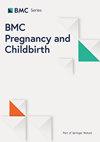围产期焦虑评估措施的评估:认知访谈研究
IF 2.8
2区 医学
Q1 OBSTETRICS & GYNECOLOGY
引用次数: 0
摘要
孕期和产后焦虑症的发病率很高,但人们对其认识不足。要识别围产期焦虑症,评估工具必须为围产期妇女所接受、相关且易于使用。为了确定孕妇或产后妇女(n = 41)对焦虑测量方法的接受度和易用性,我们研究了以下四种测量方法的五个版本:广泛性焦虑症量表(GAD)的 2 项和 7 项版本;Whouoley 问题;常规评估中的临床结果(CORE-10);以及斯特林产前焦虑量表(SAAS)。认知访谈用于检查理解、判断、检索和反应的难易程度。所有测量结果均可接受。有些项目被认为与围产期不太相关,如睡眠困难。理解、判断、检索和反应的难易程度各不相同,所有测量方法都有优缺点。SAAS和CORE-10中存在问题成分的平均数量最少。GAD 有问题成分的平均数最高。非二元回答选项更受欢迎。对时间框架(如一周、一个月)的偏好各不相同。定性数据提供了有关对每项测量的反应的深入信息。研究结果可用于为临床指南和有关孕期和产后可接受焦虑评估的研究提供参考。本文章由计算机程序翻译,如有差异,请以英文原文为准。
Evaluation of perinatal anxiety assessment measures: a cognitive interview study
Anxiety in pregnancy and postpartum is highly prevalent but under-recognised. To identify perinatal anxiety, assessment tools must be acceptable, relevant, and easy to use for women in the perinatal period. To determine the acceptability and ease of use of anxiety measures to pregnant or postpartum women (n = 41) we examined five versions of four measures: the Generalised Anxiety Disorder scale (GAD) 2-item and 7-item versions; Whooley questions; Clinical Outcomes in Routine Evaluation (CORE-10); and Stirling Antenatal Anxiety Scale (SAAS). Cognitive interviews were used to examine ease of comprehension, judgement, retrieval and responding. All measures were acceptable. Some items were deemed less relevant to the perinatal period e.g., difficulties sleeping. Ease of comprehension, judgement, retrieval and responding varied, with all measures having strengths and weaknesses. The SAAS and CORE-10 had the lowest mean number of problematic components. The GAD had the highest mean number of problematic components. Non-binary response options were preferred. Preferences for time frames (e.g. one week, one month) varied. Qualitative data provides in-depth information on responses to each measure. Findings can be used to inform clinical guidelines and research on acceptable anxiety assessment in pregnancy and after birth.
求助全文
通过发布文献求助,成功后即可免费获取论文全文。
去求助
来源期刊

BMC Pregnancy and Childbirth
OBSTETRICS & GYNECOLOGY-
CiteScore
4.90
自引率
6.50%
发文量
845
审稿时长
3-8 weeks
期刊介绍:
BMC Pregnancy & Childbirth is an open access, peer-reviewed journal that considers articles on all aspects of pregnancy and childbirth. The journal welcomes submissions on the biomedical aspects of pregnancy, breastfeeding, labor, maternal health, maternity care, trends and sociological aspects of pregnancy and childbirth.
 求助内容:
求助内容: 应助结果提醒方式:
应助结果提醒方式:


